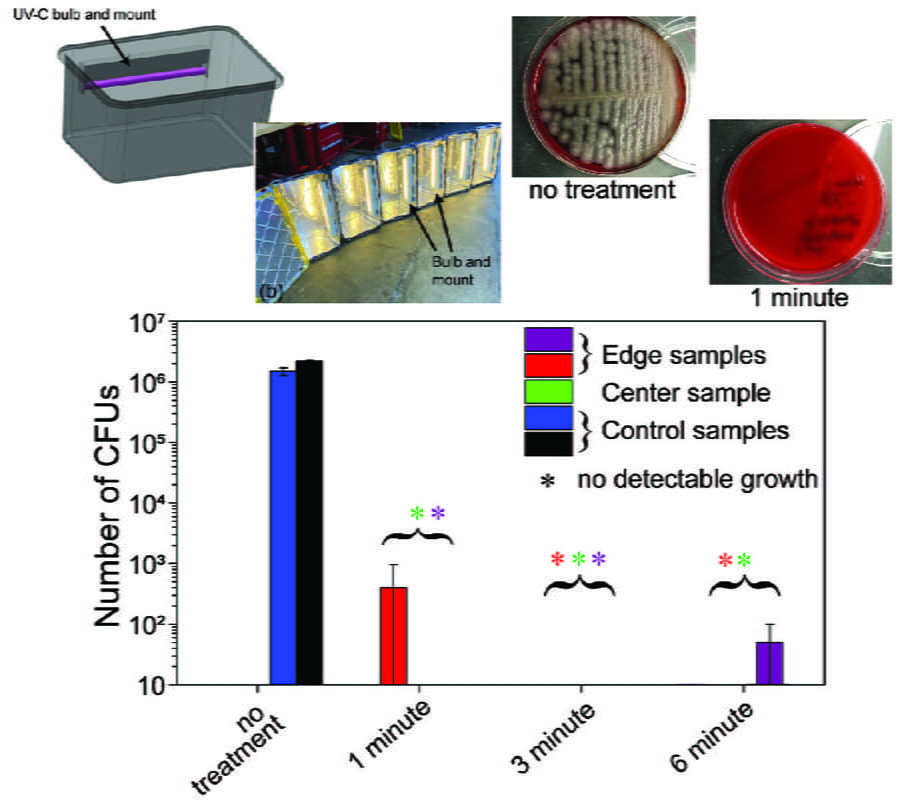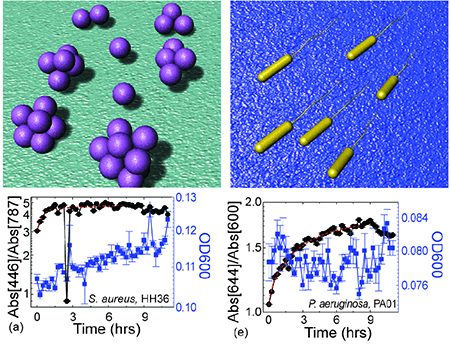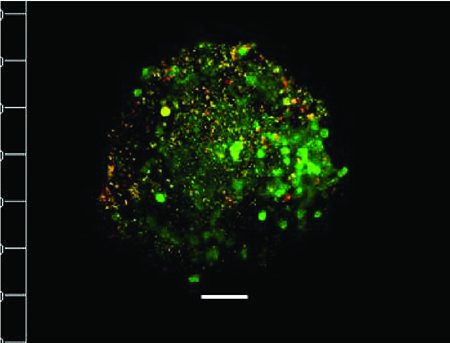-

By combining simple, every day components, a UV-C disinfection system was designed, built, and validated. Details are in: R. She, D. Chen, P. Pak D. K. Armani, A. Schubert, A. M. Armani, “Lightweight UV-C disinfection system“, Biomedical Optics Express 11 (8), 4326-4332 (2020).
-

The biomechanical behavior of resected porcine tissue from three different organs is analyzed using a recently developed optical polarimetric system. Published in A. W. Hudnut, et al, Biomedical Optics Express 8 (10) (2017). Link: https://www.osapublishing.org/boe/abstract.cfm?uri=boe-8-10-4663
-

A new approach for analyzing the growth kinetics of S. aureus and P. aeruginosa is demonstrated based on differential optical spectroscopy. Published in S. McBirney et al, Biomedical Optics Express 7 (10) (2016). Link: https://www.osapublishing.org/boe/abstract.cfm?uri=boe-7-10-4034
-

Multi-photon imaging of nanoparticles (red) in a 3D tumor spheroid (cells expressing GFP). Study investigated role of nanoparticle shape and surface on uptake efficiency. Published in: T. D. Rane, A. M. Armani, PLOS One (2016). Link: http://journals.plos.org/plosone/article?id=10.1371/journal.pone.0167548
Our research in biological and chemical detection leverages our work in materials and in integrated devices. Frequently, advances in materials or in devices directly translate to novel strategies for bio/chem detection. Additionally, we often collaborate with other research groups in this area, sharing our expertise.
Instrumentation development/construction
- We are actively building several new biodetection and biocharacterization instruments for applications in low resource settings (e.g. malaria detection) and in performing biomechanics/mechanobiology measurements of whole tissue.
Mechanobiology
- Using our recently developed optical fiber polarimetric elastography system (aka tissue squisher), we are investigating the mechanism behind force-induced damage in cartilage (vs. age-induced). We are also launching a new study into the biomechanics of cancer.
Bioelectrics
- We are developing functional imaging agents that can (non-invasively) modulate the cell’s intrinsic bioelectric field. Using our newly developed agents, we will selectively modulate an individual cell and study its impact on the surrounding cell network.



